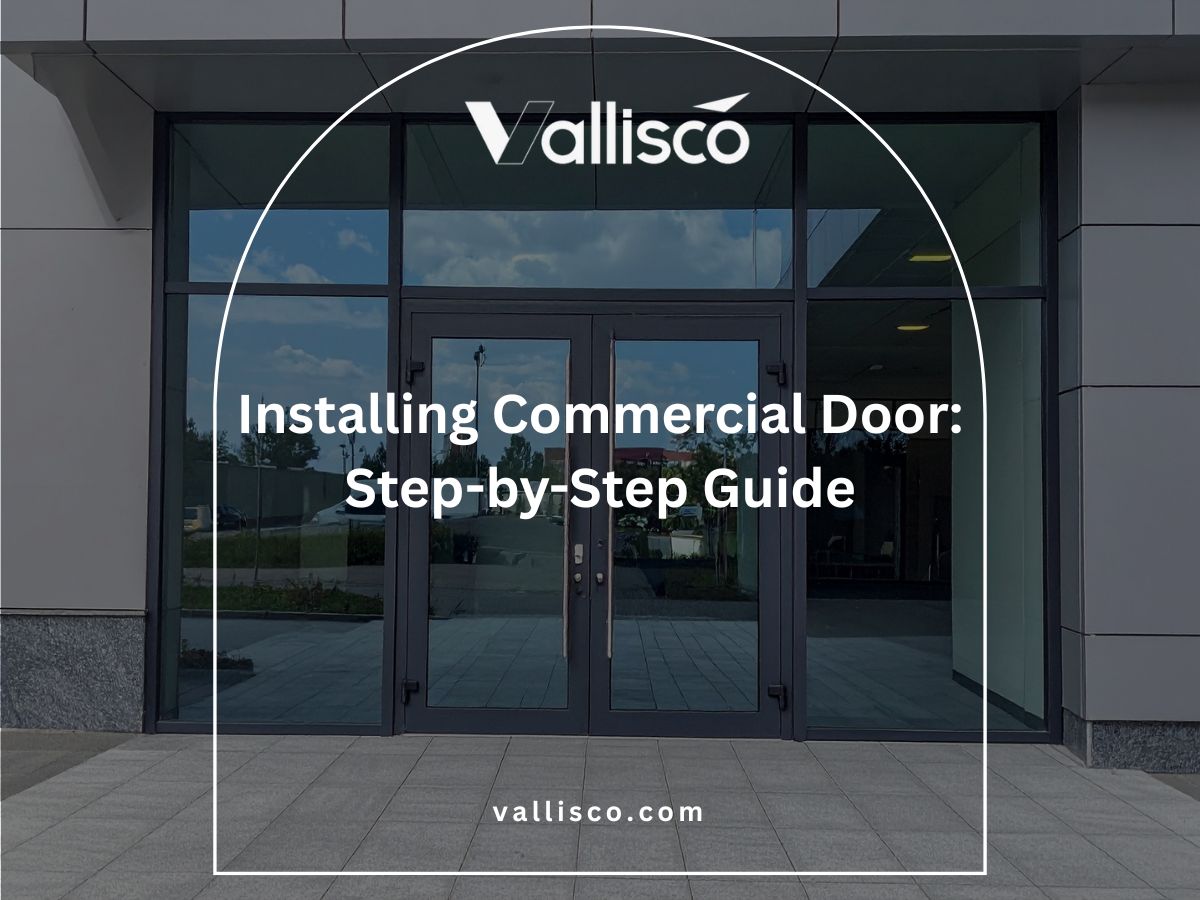I still remember the first time I stepped into a hotel project site and saw the wrong type of shower door installed. The client wasn’t happy, and the contractor had to replace them at extra cost.
That experience taught me just how much a simple choice like pivot or hinged can affect budget, schedule, and satisfaction.
Over the years, I’ve worked with dozens of commercial bathroom projects, from boutique hotels to large residential developments. I’ve seen what works, what doesn’t, and why the wrong decision can snowball into bigger problems.
In this article, I’ll break down the real differences between pivot and hinged shower doors, focusing on the details that matter to your business. By the time you finish reading, you’ll know exactly which option fits your project best.
Choosing the right shower door shouldn’t be a guessing game. It should be a confident, informed decision.
Let’s dive in!
Quick Comparison Chart
Choosing between a pivot and hinged shower door doesn’t have to be guesswork. This table breaks down the essentials so you can match each option to your project needs quickly.
| Feature | Pivot Door | Hinged Door | Pros | Cons | Ideal For |
| Space Requirements | Less clearance | Full swing | Fits small spaces | Possible bottom leaks | Small or irregular layouts |
| Installation & Mounting | Load on floor & ceiling | Load on side frame | Works with weaker walls | Needs precise install | Sites with mixed wall strength |
| Style & Aesthetic | Sleek, modern | Classic, framed | Contemporary look | Higher cost | High-end builds |
| Functionality | Smooth, flexible swing | Familiar swing | Flexible entry | Needs adjustment | Premium or ADA projects |
| Durability | Even load | Strong seal | Less hinge wear | Floor seal wear | Long-term projects |
| Cost & Value | Higher upfront | Lower upfront | Fewer repairs | Complex install | Long-term investment |
For more detailed info, read below for an in-depth breakdown of each feature. We’ll cover how pivot and hinged doors compare in real-world projects, what to watch out for during installation, and how to choose the right option for your specific layout and budget.
1. What Is a Pivot Shower Door?
A pivot shower door is a swinging door that turns on small pivot hinges at the top and bottom of the frame instead of the side. Give it a gentle push or pull, and it glides open, sometimes inward, sometimes outward, or even both. Pivot doors are also sturdy enough to handle larger, heavier glass panels, making them a favorite for wide shower openings.
Ppivot shower doors do not need as much side clearance as other swinging doors, but you will still want enough open floor space for the door to swing comfortably. Available in frameless, semi-frameless, and framed styles, they suit different budgets and design preferences. If you are looking for something sleek that also feels solid and reliable, a pivot door could be the perfect fit.
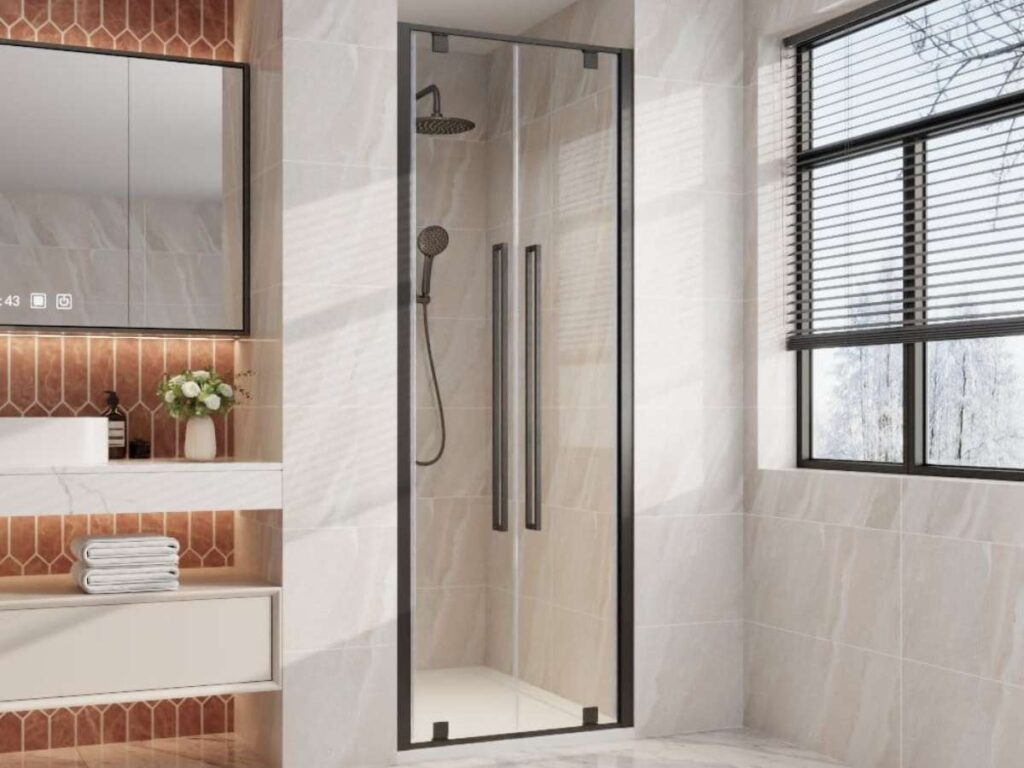
2. What Is a Hinged Shower Door?
A hinged shower door works much like the door to any other room in your home. It’s attached to the wall or a fixed glass panel using hinges on one side, allowing it to swing open in a single direction, usually outward. This classic design is straightforward, sturdy, and feels familiar to use. Many people like hinged doors because they create a wide, open entryway, making the shower feel more spacious and inviting.
In day-to-day life, hinged shower doors are simple and reliable. They’re easy to pair with various styles, from sleek frameless designs to more traditional framed looks. While they do need enough clearance for the swing, they’re a timeless choice that works well in many bathroom layouts. If you want something that’s both practical and comfortable to use, a hinged shower door can be a solid, no-fuss option.
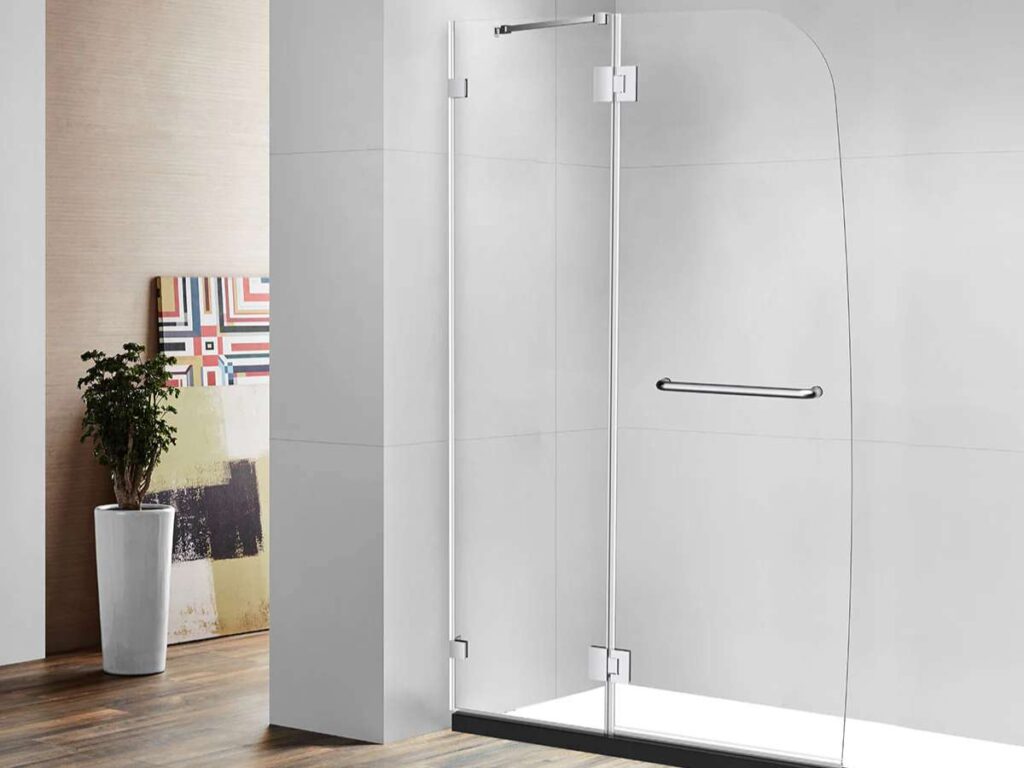
3. Space Requirements
In every project I’ve worked on, whether it was a boutique hotel or a gym renovation, space planning has made or broken the bathroom design.Let’s look at how pivot and hinged doors compare when space is on the line.
Opening Radius and Clearance
- Pivot: Pivot doors rotate from a pivot point set in the floor and ceiling, so their swing requires less clearance. This makes them a practical fit in tighter footprints without interfering with nearby partitions or fixtures.
- Hinged: Hinged doors open like a standard door, which means they need the full outward arc. This extra clearance has to be factored in early in the design to avoid layout conflicts later.
Bathroom Layout Compatibility
- Pivot: With the option to open inward, outward, or both (depending on the hardware), pivot doors work well in irregular or high-traffic layouts. This adaptability can help you avoid costly stall redesigns mid-project.
- Hinged: Hinged doors shine in straightforward stall configurations with no obstructions. They are simple, reliable, and predictable for spaces that do not require custom movement options.
Effect on Bathroom Traffic Flow
- Pivot: The smaller clearance helps keep traffic moving in multi-user spaces like locker rooms or shared dormitory bathrooms. This can reduce congestion during peak hours.
- Hinged: Hinged doors have a consistent outward swing, which makes movement patterns easy for users to anticipate. In larger facilities, this predictability can contribute to an orderly flow.
Takeaway
If your project involves tight stall spacing or unconventional layouts, pivot doors give you more flexibility without major compromises. Hinged doors, on the other hand, deliver a familiar, dependable option for straightforward plans where space is plentiful. The key is matching the door type to your layout early, so you save on rework, delays, and unexpected costs.
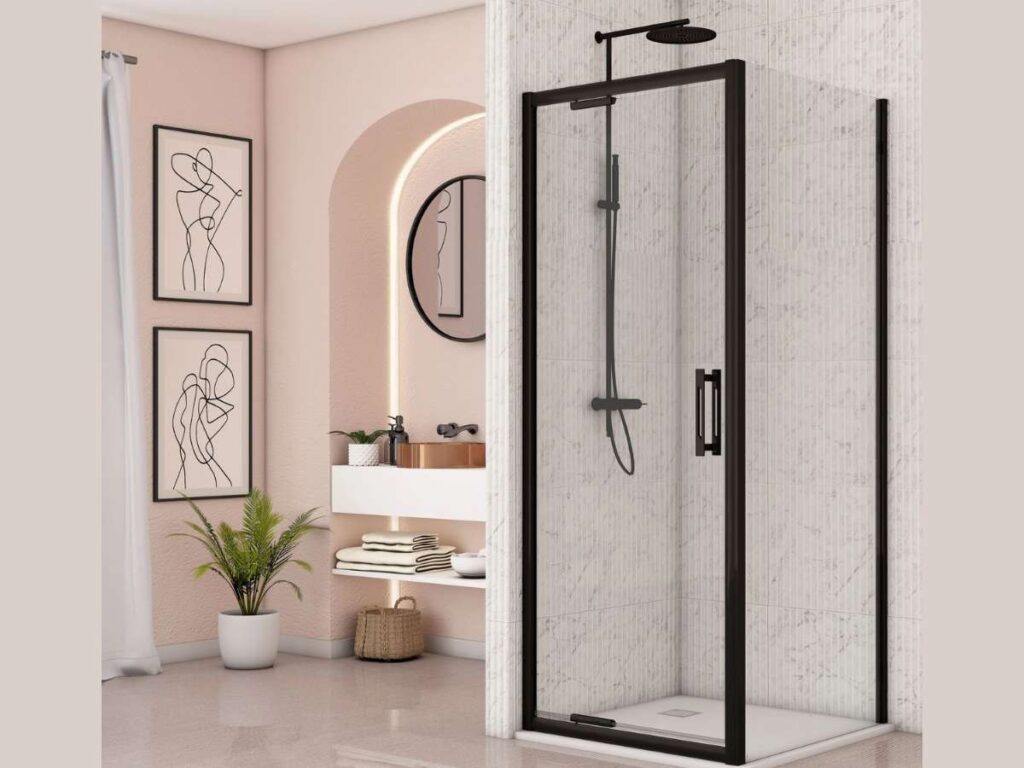
4. Installation and Mounting
From what I have seen on job sites, the installation process can be just as important as the door choice itself. If the wrong mounting method or hardware is used, it can lead to delays, extra labor costs, and even warranty claims down the road.
Hardware Differences
- Pivot: Pivot doors rely on top and bottom pivot hinges, which are designed to carry the weight of the door evenly. These components can be more expensive, but they offer smoother operation and reduce strain on the wall structure.
- Hinged Hinged doors use side-mounted hinges similar to a standard door. They are easier to source and often more cost-effective, but they place all the weight on one side, which can affect long-term alignment.
Wall and Frame Support Needs
- Pivot: Because pivot doors distribute weight vertically through the pivot points, they can be installed in areas where the wall framing may not be reinforced for heavy loads. This can open up more design flexibility in certain builds.
- Hinged: Hinged doors require strong side framing or reinforcement to handle the door’s weight and daily use. Without adequate support, sagging or misalignment can occur over time.
Takeaway
If you want greater design flexibility and even weight distribution, pivot doors can be worth the extra installation complexity. Hinged doors are generally simpler and faster to install, which can help reduce labor costs on large-scale projects. Choosing the right option depends on your timeline, available skill on-site, and long-term maintenance considerations.
5. Style and Aesthetic Appeal
In commercial and multi-unit projects, style isn’t just about making the bathroom look nice, it’s about meeting brand standards, impressing guests or tenants, and aligning with the overall design vision. Here’s how pivot and hinged options measure up in terms of aesthetics.
Design Flexibility
- Pivot: Pivot doors have a sleek, clean appearance with less visible hardware, which works well for contemporary designs and upscale environments. Their ability to open in multiple directions also adds versatility to the design plan.
- Hinged: Hinged doors carry a more traditional look, making them ideal for spaces where a familiar, standard door profile is preferred. They blend easily with a wide range of design styles.
Customization Options
- Pivot: Pivot doors often come with options for frameless designs, tinted or patterned glass, and high-end finishes. This makes them a strong choice for projects that require a signature look.
- Hinged: Hinged doors are available in numerous frame colors, handle designs, and glass types. While they may not push design boundaries as much as pivot doors, they still offer plenty of ways to match brand or property themes.
Takeaway
If your project demands a high-end, modern impression, pivot doors deliver a sleek and adaptable style that elevates the overall space. Hinged doors provide a classic, reliable look that works across a wide variety of design schemes without risking a mismatch. In the end, your choice should align with the branding, guest expectations, and the long-term design vision for the property.
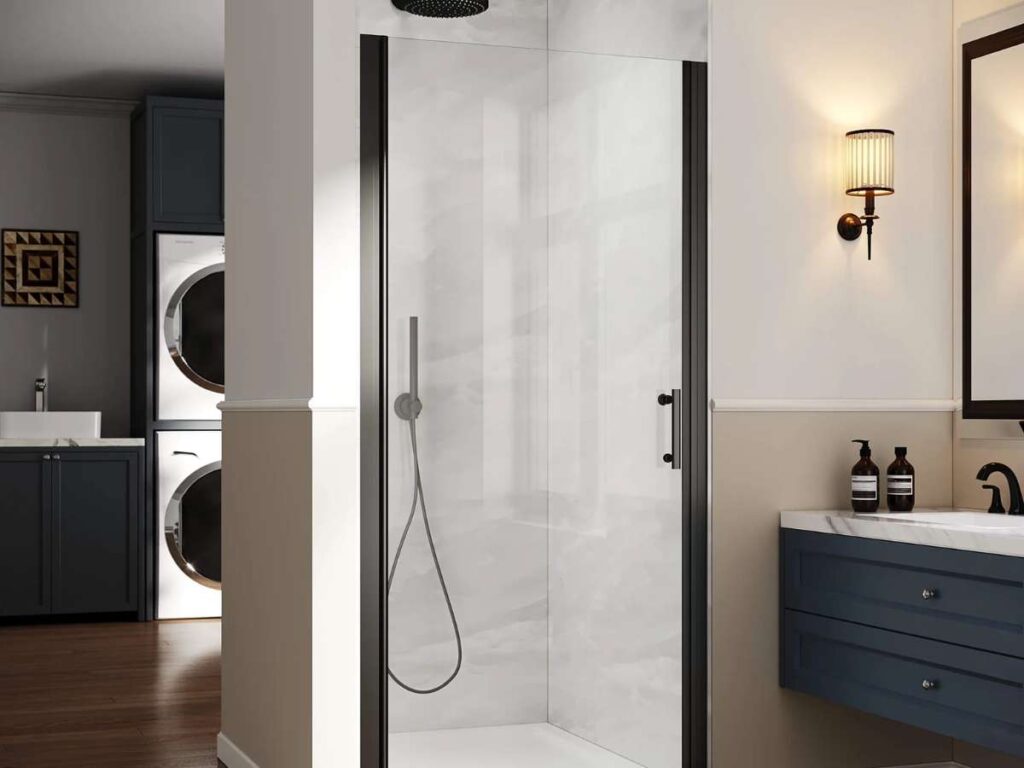
6. Functionality and Ease of Use
A shower door that’s difficult to operate, awkward to maintain, or inconvenient for certain users can lead to complaints, higher service calls, and unnecessary wear over time. Here’s how pivot and hinged doors perform in everyday use.
Opening Mechanism Feel
- Pivot: Pivot doors open with a light, fluid movement thanks to weight distribution between the top and bottom pivots. This can make them feel more premium, especially in high-end or hospitality settings.
- Hinged: Hinged doors open and close with the same motion as a standard room door. This familiarity can be reassuring to users and reduces the learning curve in public or shared facilities.
Accessibility Considerations
- Pivot: The ability to open inwards, outwards, or both makes pivot doors easier to configure for ADA compliance or mobility-friendly layouts. At Vallisco, this flexibility can help meet accessibility standards without major design compromises.
- Hinged: Hinged doors open in one fixed direction, which works well in larger stalls but may require extra space to ensure accessibility clearances are met.
Maintenance Needs
- Pivot: Because the weight is supported at two points, pivot doors typically experience less wear on side hardware. However, the floor and ceiling mounts may need occasional adjustment to keep the swing smooth.
- Hinged: Hinged doors have fewer specialized parts, making them easier to service and replace if needed. The trade-off is that side-mounted hinges can loosen over time under heavy use.
Takeaway
If you want smooth operation and greater flexibility for accessibility, pivot doors offer more options while maintaining a premium feel. Hinged doors keep things simple, familiar, and easy to service, which can be valuable for high-traffic facilities where speed of repair matters. The choice ultimately depends on whether your project values flexibility and feel, or straightforward operation and maintenance efficiency.
7. Durability and Longevity
Over the years, I’ve learned that a shower door’s true value shows up after months or even years of daily use. In commercial or multi-unit properties, durability can mean the difference between trouble-free operation and recurring service calls. Let’s compare how pivot and hinged doors hold up over time.
Wear Points
- Pivot: With weight supported at both the top and bottom, pivot doors spread the stress more evenly. This helps reduce wear on hinges but puts more focus on keeping the pivot hardware aligned and free of debris.
- Hinged: Hinged doors place all their weight on the side hinges, which can cause gradual loosening in high-use environments. Regular checks and tightening are important to maintain proper alignment.
Water Seal Effectiveness
- Pivot: Because of the pivot gap at the floor, water control depends heavily on proper seal installation and maintenance. Inconsistent upkeep can lead to leaks over time.
- Hinged: Hinged doors typically have a more continuous frame or gasket system, which offers better long-term water resistance. This can help minimize moisture-related damage around the stall.
Takeaway
If long-term durability is your top priority, both pivot and hinged doors can perform well with the right materials and proper upkeep. Pivot doors benefit from balanced load distribution but require consistent maintenance on their pivot points. Hinged doors offer simpler, more predictable sealing and hardware upkeep, but they depend on strong side support to maintain performance.
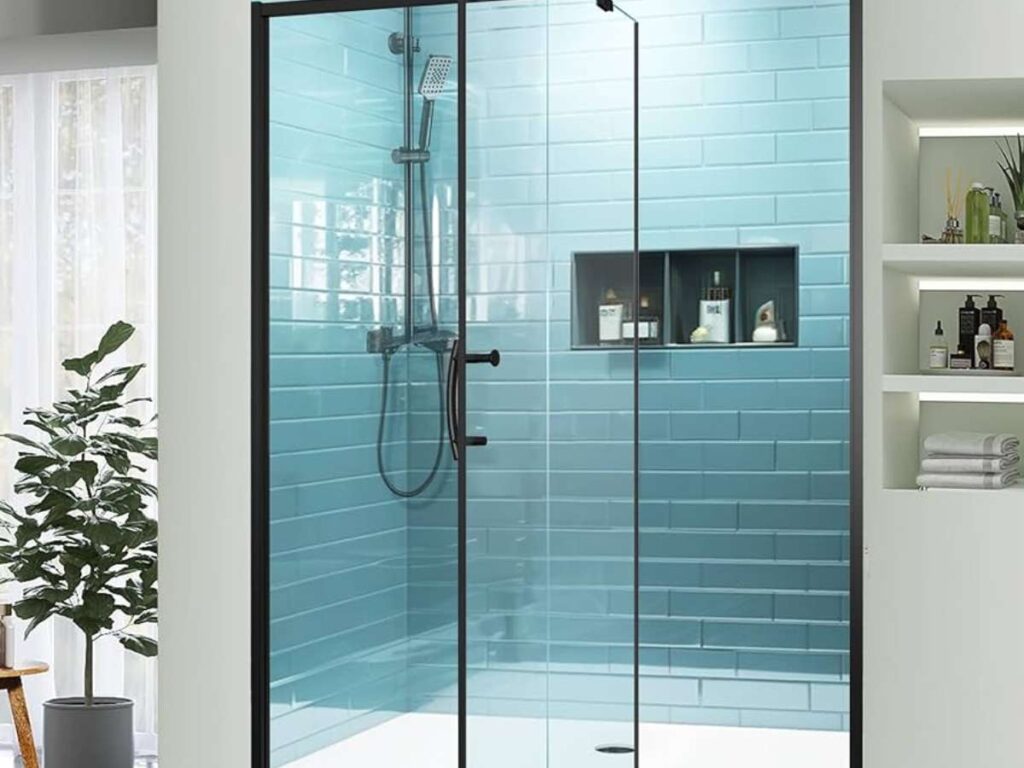
8. How to Choose Between a Pivot and Hinged Shower Door
I’ve seen many projects run into delays or unexpected costs simply because the shower door decision was left until the last minute. In reality, this choice affects everything from installation timelines to maintenance budgets.
Here’s how to approach the decision like a pro.
Assessing Opening Clearance and Stall Geometry
Before you choose, measure the available space and note any obstructions near the stall. Pivot doors need less clearance because of their central pivot point, while hinged doors require a full outward swing. In tight or irregular layouts, that clearance difference can determine whether your design passes inspection without changes. Taking time to evaluate stall geometry upfront will save on costly redesigns or hardware swaps later.
Evaluating Structural Support Requirements
Your wall and frame conditions will influence which door type you can install without major reinforcement. Pivot doors distribute weight vertically, which can be an advantage if your side framing isn’t heavy-duty. Hinged doors concentrate the load on one side, so they demand strong framing or backing to prevent sagging. Knowing your site’s structural capacity early helps you choose a door that won’t compromise longevity.
Analyzing Maintenance Demands Over Service Life
No matter how good the initial installation is, both pivot and hinged doors require ongoing care. Pivot doors may need periodic adjustment at the top and bottom mounts to maintain smooth operation. Hinged doors require hinge tightening and seal checks to avoid misalignment and leaks. Factoring in the ease of maintenance and availability of replacement parts will help you plan for long-term reliability.
Balancing Design Intent with Functional Needs
While both door types can look great, their style and movement patterns create different user experiences. Vallisco’s pivot doors offer a sleek, modern appearance and flexible opening options, which suit high-end or design-focused projects. Hinged doors provide a familiar, traditional swing that works well in standard or budget-conscious builds. The best choice is the one that aligns your design goals with daily usability for end users.
Conclusion
I started this article with the hotel project that went wrong because of a simple door choice. That experience taught me that details matter, and now you know why.
From space needs to long-term durability, pivot and hinged shower doors have very different strengths.
Choosing right means fewer headaches, happier clients, and a smoother build.
You’ve got the facts; now it’s time to apply them to your project. If you want doors that match your design, budget, and brand, Vallisco is here to help. Contact us today!
Explore Related Resources
Want to see more? We’ve gathered additional product choices to give you even more variety:
Still haven’t found what you’re looking for? Don’t hesitate to contact us. We’re available around the clock to assist you.




